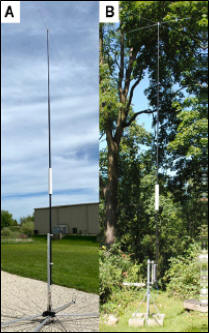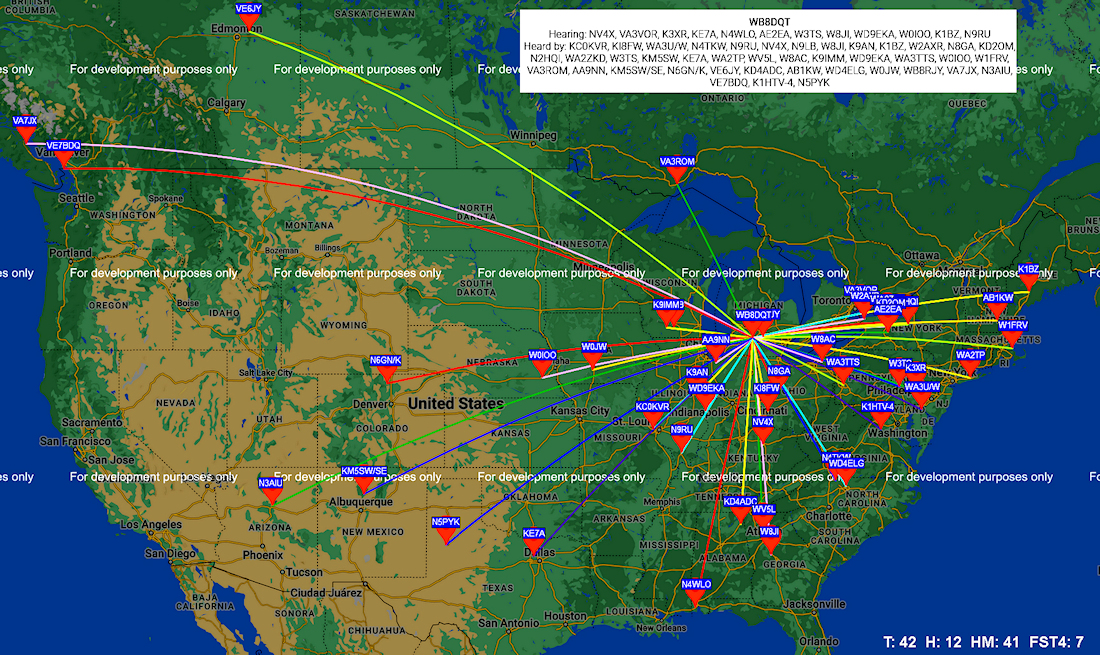
Case Study
| Publisher: Information Station Specialists |
| A Much Needed Antenna | |
| by Ralph Taggart (WB8DQT) Mason, MI | |
| In October of 2017, the FCC gave us back a piece of our history by creating a new Amateur Radio band at 630 meters (472-479 kHz). The biggest challenge when you start thinking about putting together a station for this band is the antenna. A half-wave dipole for 630 meters would have a span of over 1000 feet and a quarter-wave vertical would tower-over 500 feet and require lots of radials of comparable length! Any Amateur Radio antenna will be very small (and very inefficient) when compared against that standard. Until recently there have been no commercial antenna options and those constructing their inverted L or other basic antennas strive to get as much wire into the air as possible. It is not surprising that most operators have property that is large enough to accommodate such antennas. Those on smaller lots in town or other residential situations seem to have few options. That was all to change in 2021 with the introduction of the Lowdown 630.PD, manufactured and marketed by Information Stations Specialists in Zeeland, Michigan (theRADIOsource.com). This antenna, illustrated in the image below, has two characteristics that make it special: | |
 |
The units are only needed for the initial tuning and thus can be borrowed if you don't have your own. The help of another Radio Amateur makes everything easier and safer! Once tuned, the job is done and there is no need to endlessly tinker with a bucket variometer or other vintage tuner. At that point the antenna is fed from standard coax from the shack. Repeating the tuning is only required if you change the radial field or some other significant aspect of the mounting and you will find the antenna tuning is very stable in all kinds of weather. |
| So, I have a vertical that looks more like 20 or 30 meters instead of 630, it sits over a field of 32 radials that are each only 10 feet long, and is next to a stand of trees, far from being in the clear. In the end I was hoping for at least some marginal performance. Needless to say, I was astonished to find that the Lowdown 630 was completely serviceable and effective on the 630 meter band. Below is the result of a 12-hour WSPR run near the end of September: | |
 | |
| “Lowdown 630 continues to amaze! The latest WSPR count is a new record - 42 hits, 41 of which heard me! Had seven two-way FSt4 contacts, including W0SD for my 13th state worked.” | |
| This run was typical of the early Fall, with 34 WSPR hits. During the Summer there is a much higher average noise level and mostly ground wave propagation, so somewhere around 20 hits is the rule with my setup. I was running 50 watts input, which probably resulted in about 1W ERP, and every one of the 34 stations heard my transmissions! WSPR can be fun and informative, but I wanted two-way QSOs and I have just passed a total of 100 contacts using FST4. By mid-winter, with much lower average noise and more ionospheric propagation, I will expect to have two-way QSOs with the West Coast and some very crowded WSPR plots. I also expect Winter to bring the opportunity for some CW that brings to life the nature of the earliest activity of the first Radio Amateurs! Information Station Specialists has designed an antenna that permits those of us, with smaller lots and nearer neighbors, the fun of working 630 meters. When you do, you will meet a fine group of very friendly operators. There is a lot to learn on this vintage band and it is painless and fun. It will take a little time to settle in, but patience assures success. | |
PO Box 51, Zeeland, Michigan, USA, 49464-0051, Phone 616.772.2300, Email
• • •